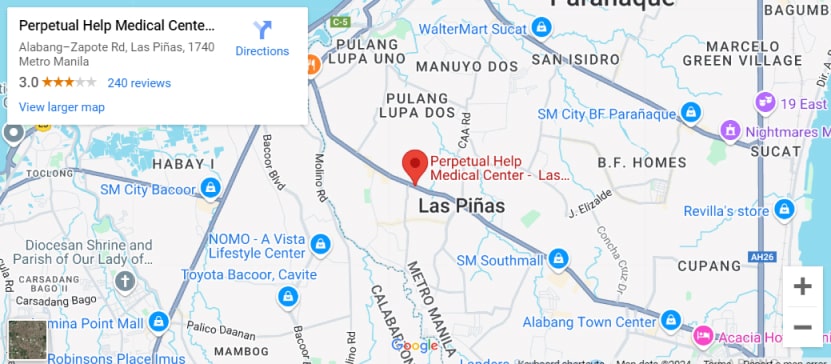Women’s Healthcare and Diagnostic Center
Women’s healthcare needs are unique and require special care. Perpetual Help Medical Center – Las Piñas established the Women’s Healthcare and Diagnostic Center to provide health and medical services that are necessary in ensuring a woman’s overall health and well-being.
Early Detection is the Best Protection
Breast Cancer is the number one cause of death among women worldwide. While there is no certain way to avoid developing Breast Cancer, women can protect themselves against this disease through early detection. Early discovery of cancer means higher chance of survival and more treatment options.
The Women’s Healthcare and Diagnostic Center has Digital Mammography that can detect lumps even before they can be felt and pinpoint even the smallest calcium deposits in the breast. We also have Ultrasound System with Breast Scanner and Elastography, an imaging system that uses high frequency sound waves to determine the nature of the lump.
These breast screenings may cause minor discomfort but are generally painless, fast, and easy.
Healthy Bones for Women’s Active Lifestyle
As women age, the risk for developing osteoporosis also increases. Osteoporosis is a disease that leads to brittle and fragile bones, which can result to chronic pain and even death. This usually happens when a woman has irregular menstruation (ammenorrhea), enters premature menopause (before the age of 45), smokes, consumes alcohol excessively, does not have enough calcium and vitamin D, or uses corticosteroid.
Preventive healthcare and early diagnosis are critical to avoiding the onset of this debilitating disease. At the Women’s Healthcare and Diagnostic Center, we use Dual-energy X-ray Absorptiometry (DXA) scan to measure a woman’s bone mineral density and assess the risk for developing fractures. Through this, the doctor can recommend strategies to help prevent or manage osteoporosis.
Complete Maternal Care
During pregnancy, a woman’s body undergoes many changes, and so does her healthcare needs. To help mothers have healthy pregnancy and safe delivery, the Women’s Healthcare and Diagnostic Center has designed Mother and Baby Bundle packages for Normal Spontaneous Delivery and delivery by Caesarian Section.
We also have 4D Ultrasound, a state-of-the-art ultrasound imaging system that takes 3-dimensional and amazingly detailed images of the fetus in real-time, producing live movement just like in a video. 3D and 4D scans are primarily intended to enhance mother and baby bonding. It also encourages parents, especially the mother, to adopt a healthier lifestyle and to take better care of their unborn baby.
4D Ultrasound also allows physicians to carefully observe fetal behavior, breathing, swallowing, and various facial expressions and helps in early classification of joint and skeletal problems such as club foot.




